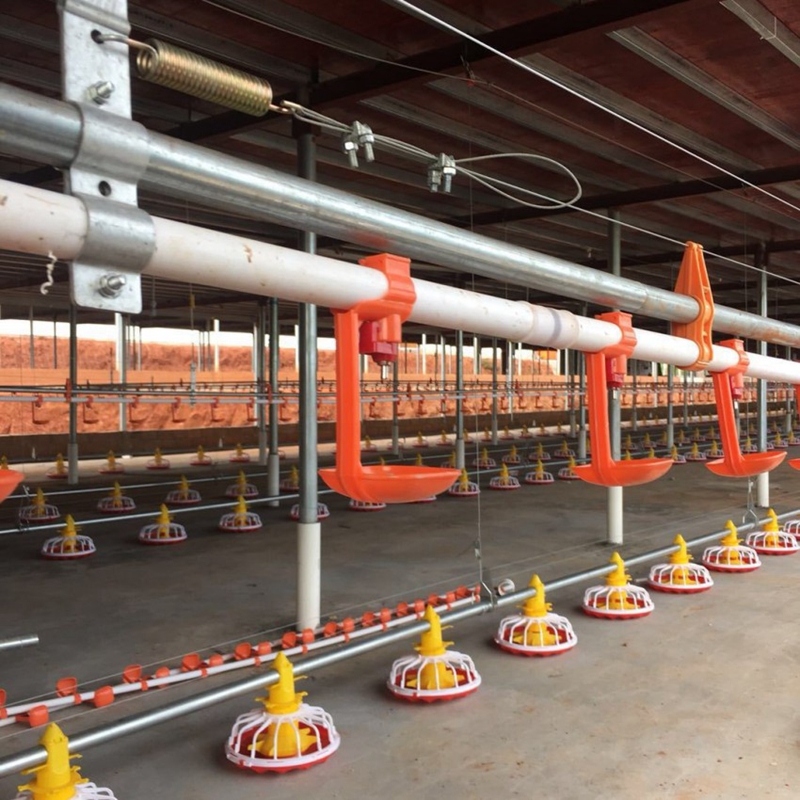Innovative Designs for Stationary Feed Mixers in Modern Agriculture
Dec . 17, 2024 14:39 Back to list
Innovative Designs for Stationary Feed Mixers in Modern Agriculture
The Evolution and Importance of Stationary Feed Mixers in Modern Agriculture
As the global demand for food continues to rise, the efficiency and effectiveness of agricultural practices have become increasingly important. One key component in the feed production process is the stationary feed mixer. These machines have significantly transformed how livestock feed is prepared and distributed, ensuring that animals receive a balanced diet that promotes health and productivity.
What is a Stationary Feed Mixer?
A stationary feed mixer is an essential piece of machinery used in the agriculture sector to blend various feed ingredients into a uniform mixture. Unlike mobile mixers, which can be transported easily around the farm, stationary mixers are typically installed in a fixed location, often near silos or feed storage areas. They are designed for large-scale operations and can handle substantial quantities of feed, making them an ideal choice for commercial farms.
Types of Stationary Feed Mixers
There are several types of stationary feed mixers, each suited for different types of feed and blending processes. The most common types include
1. Horizontal Mixers These mixers feature a horizontal mixing chamber where ingredients are blended through a series of augers. They are known for their efficiency and ability to produce a homogenous mix within a short time frame.
2. Vertical Mixers Vertical mixers utilize a vertical mixing chamber and are equipped with a vertical auger that moves ingredients upwards, promoting thorough mixing. This type is particularly effective for mixing high-moisture feeds or bulky materials.
3. Batch Mixers These mixers operate in discrete batches, allowing farmers to customize the feed mixture according to the specific needs of their livestock. This is especially beneficial for farms that raise different types of animals requiring varied nutrient profiles.
Benefits of Stationary Feed Mixers
The adoption of stationary feed mixers in agriculture brings numerous benefits
stationary feed mixers

1. Enhanced Nutritional Consistency A well-mixed feed ensures that every animal receives a balanced diet, which is vital for optimal growth, reproduction, and overall health. With stationary mixers, the risk of ingredient segregation is minimized.
2. Increased Efficiency Stationary mixers are built for heavy-duty use, allowing farms to produce large volumes of feed in a shorter amount of time. This efficiency translates to reduced labor costs and minimized downtime.
3. Customization of Feed Formulas Farmers can easily adjust their feed formulations according to the changing nutritional needs of their livestock or market demands. This flexibility allows for better management of resources and improved animal welfare.
4. Cost-Effectiveness By mixing their own feed in-house, farms can reduce the reliance on commercial feed suppliers. This not only lowers feed costs but also provides farmers with greater control over the quality of ingredients used.
5. Streamlined Operations Stationary mixers are often integrated into larger feed production systems, which may include a series of silos, scales, and conveying systems. This integration promotes a more streamlined and automated operation, reducing the need for manual handling.
Future Trends in Feed Mixing Technology
As technology advances, the design and functionality of stationary feed mixers continue to evolve. Automation, precision agriculture, and the incorporation of data analytics are becoming increasingly common. These innovations enable farmers to monitor and optimize the mixing process, ensuring that feed formulations are tailored to the specific needs of their livestock in real-time.
Furthermore, sustainability practices are gaining traction in the agricultural sector. Stationary mixers are being designed to minimize waste, utilize energy-efficient systems, and incorporate alternative feed ingredients that reduce the carbon footprint of livestock production.
Conclusion
Stationary feed mixers play a crucial role in modern agriculture, contributing to the efficiency and effectiveness of feed production. As the industry shifts towards more sustainable and technologically advanced practices, these machines will continue to be an integral part of ensuring that livestock receive the nutrients they need for health and productivity. As farmers embrace these changes, the future of feed mixing holds promise for even greater advancements that will benefit both agriculture and the environment.
-
Automatic Feeding Line System-Pan Feeder Nipple Drinker|Anping County Yize Metal Products Co., Ltd.
NewsJul.29,2025
-
Hot Sale 24 & 18 Door Rabbit Cages - Premium Breeding Solutions
NewsJul.25,2025
-
Automatic Feeding Line System Pan Feeder Nipple Drinker - Anping County Yize Metal Products Co., Ltd.
NewsJul.21,2025
-
Automatic Feeding Line System Pan Feeder Nipple Drinker - Anping County Yize Metal Products Co., Ltd.
NewsJul.21,2025
-
Automatic Feeding Line System - Anping Yize | Precision & Nipple
NewsJul.21,2025
-
Automatic Feeding Line System - Anping Yize | Precision & Nipple
NewsJul.21,2025






